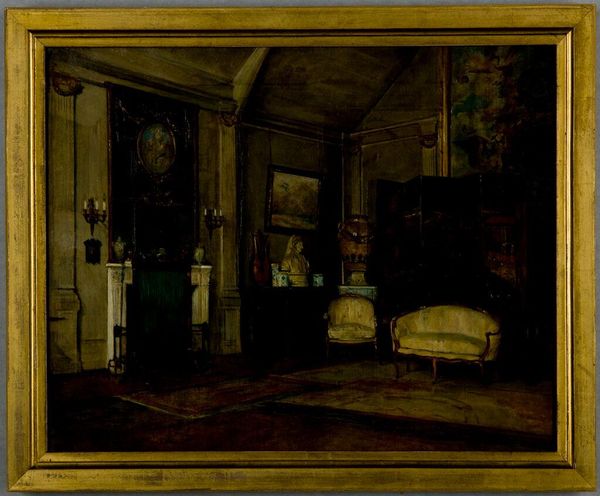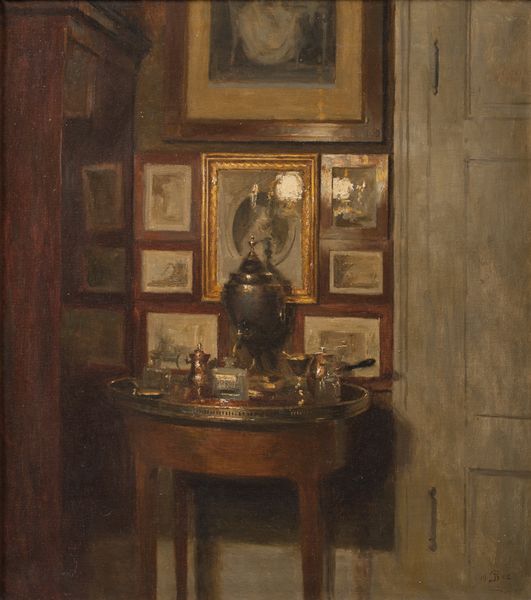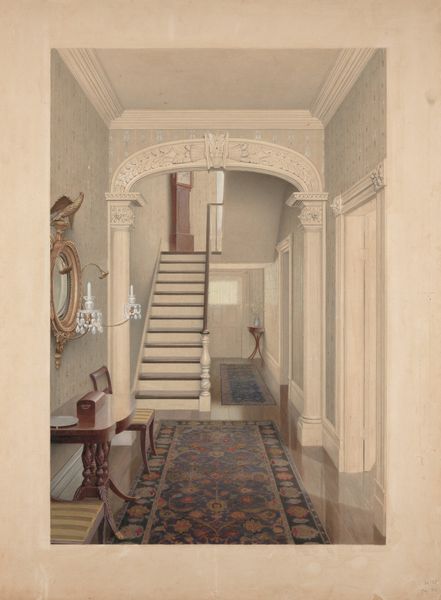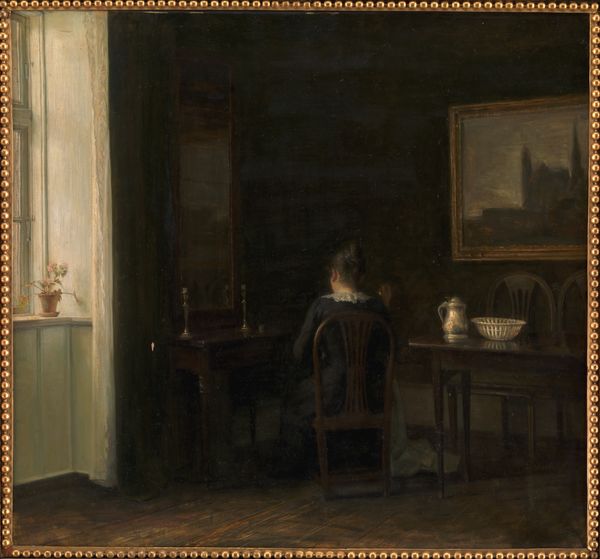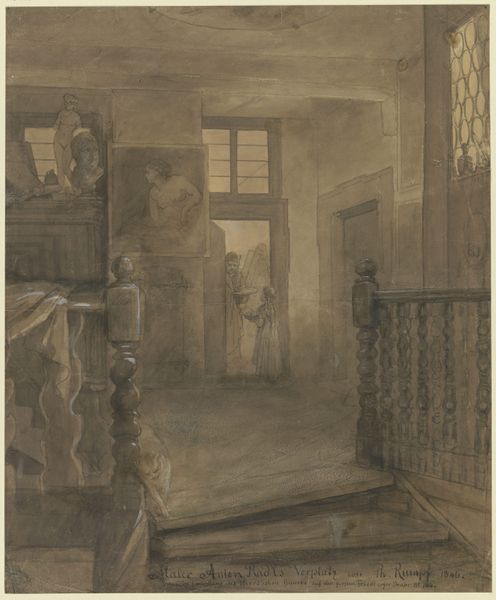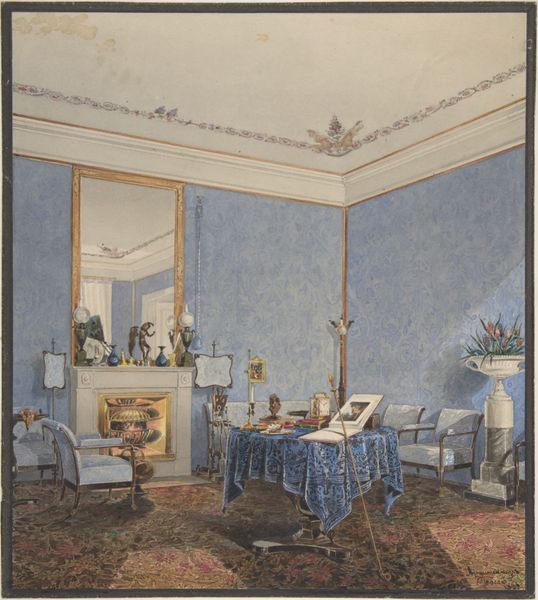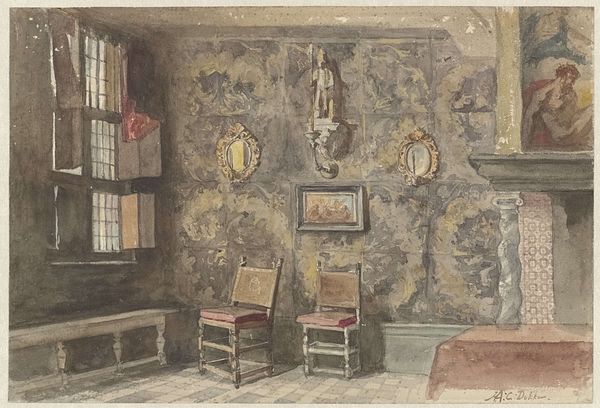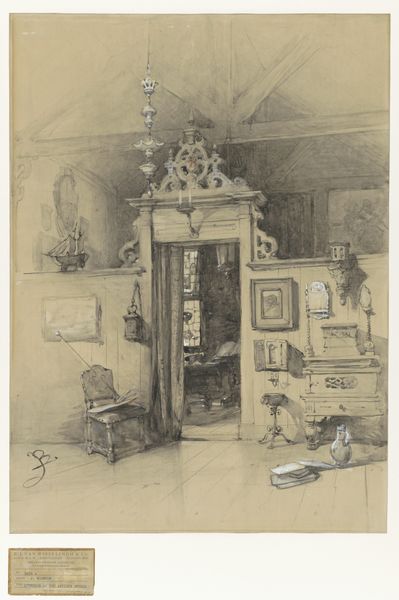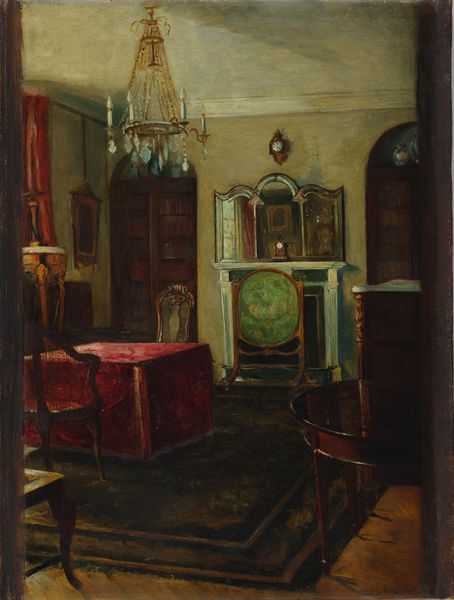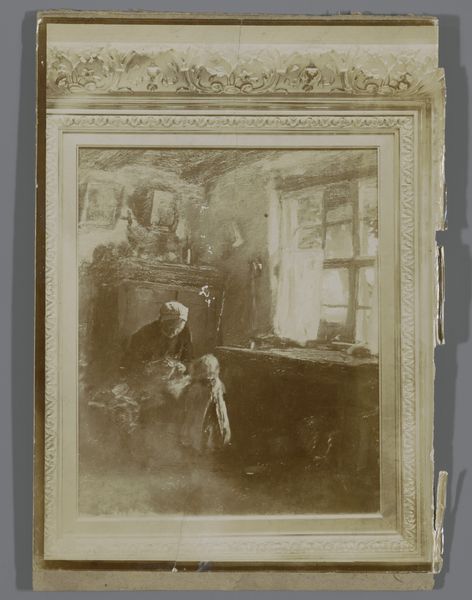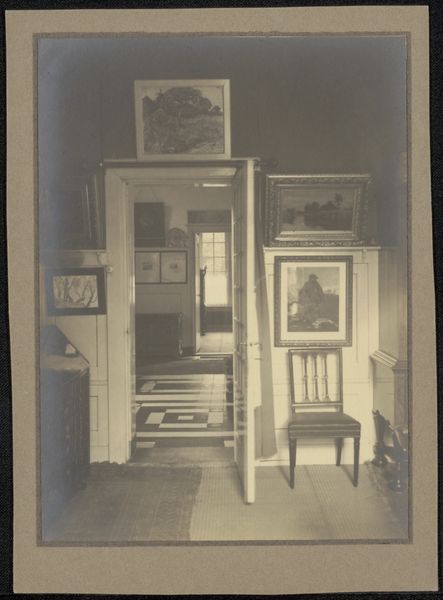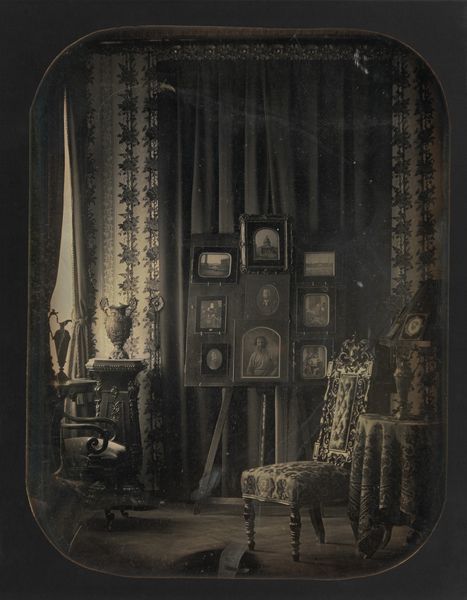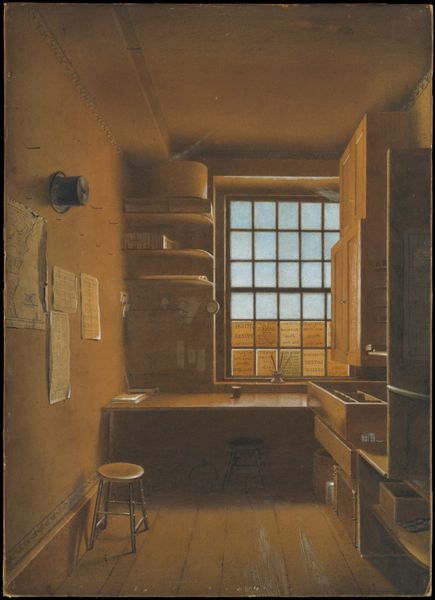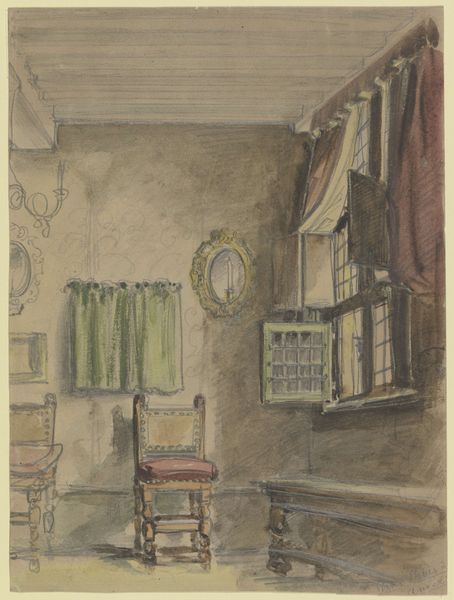
Dimensions: 12 5/8 x 10 5/8 in. (32.1 x 27 cm)
Copyright: Public Domain
Curator: Adolph Menzel's 1851 oil painting, "The Artist's Sitting Room in Ritterstrasse," invites us into an intimate domestic space. It currently resides at the Metropolitan Museum of Art. Editor: My first impression is how dim yet inviting it feels. The warm hues reflecting off the wooden floorboards create a comforting atmosphere despite the limited light. Curator: Precisely! This work offers an intriguing glimpse into the artist’s personal world. Menzel, a pivotal figure in 19th-century German art, presents a genre scene free from the usual pomp or grand narrative. Instead, it depicts a quiet corner of his life, reflective of the growing artistic interest in Realism during the period. Editor: Looking at the materiality, the way the paint is layered suggests a focus on the texture and luminosity. Notice how light catches the edge of the desk and curtains – clearly there's a sensitivity to the interplay between artificial and natural light within this manufactured interior. You get a sense of a working artist surrounded by tools, paper... it's all contributing to the business of making. Curator: The composition directs our gaze intentionally, moving from the small writing desk with its visible papers, indicative of the artist’s practice, towards the diffused light of the window veiled by patterned curtains. It gives us access to what amounts to an early form of private expression and, to an extent, hints at an emerging sense of artistic autonomy in society. Editor: Right, it is quite the autonomous project. I see also how the rose placed beside what appears to be a plaster bust provides a deliberate juxtaposition – manufactured artistic output sits comfortably in this place beside nature and the comforts of furnishing. Think of the furniture making as its own social industry and how intertwined that must be with artistic lifestyle at the time. Curator: These details absolutely speak to the sociopolitical context. Here's a studio rendered as intimate retreat, revealing as much through omission as inclusion, subtly navigating the constraints of the era while offering access. Editor: Yes. A perfect moment frozen and displayed as an interior where the artist makes labor visible even by implying how domestic comforts support art making and being in one’s artistic space. It gives me a sense of calm that only an environment for making can allow for. Curator: Indeed. It reflects an atmosphere of domestic creativity, shaped both by artistic intent and the broader culture of the time. Editor: Looking at the textures, techniques and social implication gives new meaning to this cozy little scene for me.
Comments
No comments
Be the first to comment and join the conversation on the ultimate creative platform.
